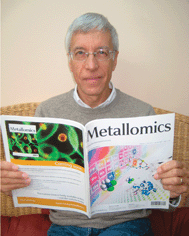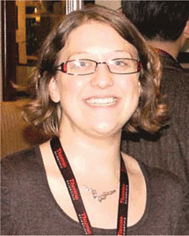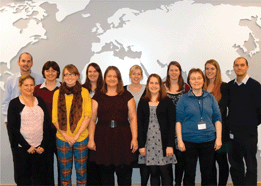Happy New Year from Metallomics
We have seen a remarkable growth in high impact submissions, with the number of accepted articles rising by over 13% over the past three years. The journal achieved an Impact Factor of 3.978 last year (2013 Journal Citation Reports® (Thomson Reuters)). Metallomics remains a home for high impact research that provides insight into the role of metals and metalloids in the biosciences with an emphasis on a global approach.Metallomics has accepted a leading role in serving the community with publications that are broadly understood as being in the area of an integrative science of metals in biology. It embraces disciplines such as bioinorganic chemistry with its various fields of different emphasis (biological inorganic chemistry, inorganic biochemistry, and inorganic chemical biology), trace element research, and ‘omics’ sciences as related to metals in biology. Metallomics grew from a new methods-oriented, instrumental analytical approach to the biometal sciences, such as hyphenated mass spectrometric techniques that offer unprecedented opportunities for ‘omics’ investigations. While continuing this tradition, Metallomics also includes molecular and cellular biological techniques that collect large data sets to understand the functions of metal ions in systems. Systems include molecules, cells, tissues and entire organisms, but also their environments in as much as they are relevant to compositions and functions. The roles of metallomes continue to gain importance in relation to those of proteomes, genomes and other significant ‘omes’. Metallomics investigations shape a new community, which we hope will grow and use the journal Metallomics as the premier platform for high impact publications.
We thank our Editorial and Advisory Board members for their very much appreciated hard work and dedication to the journal this past year, and look forward to working with them in 2015.
We had a number of wonderful themed issues last year, starting with a joint cross-journal web themed issue in partnership with the Journal of Analytical Atomic Spectrometry on Novel Stable Isotopes in Health Sciences,1 describing the growing field of natural stable isotope fractionation in the health sciences, both for understanding homeostasis in normal and pathological conditions and as potential new biomarkers. Another themed issue highlighted papers from the Fourth International Symposium on Metallomics, Oviedo, Spain.2 We also published a themed issue on Metals in Marine Biochemistry, Guest Edited by Rachel Austin and Mak Saito,3 as well as commissioning a collection of articles to highlight Zinc in the Biosciences, which was accompanied by an Editorial from Wolfgang Maret.4
Coming up for 2015 we have a number of exciting topics: Metal sensing – iron and zinc sensing; Nickel in biology, Guest Edited by Deborah Zamble; Metals in nutrition and immunity, Guest Edited by Eric Skaar and Manuela Raffatellu; and Metallomics in Japan. We are excited about these new themed issues that will showcase the wide breadth of this exciting area of research.
Members of the Editorial team were out and about at a range of conferences throughout the last year, including Pittcon 2014, Biometals 2014, Canadian Society for Chemistry CSC Conference 2014, SCIX 2014 and Zinc UK. Maybe we saw you there, if not we hope to see you at some point in 2015, as we would be delighted to talk with you about the journal and its future developments.
The Royal Society of Chemistry is happy to announce that our USA office is growing in size. Lauren Graham and Jenny Lee have been appointed as Assistant Editorial Development managers for North America, and will be helping Editorial Development Manager Jennifer Griffiths to strengthen our international presence in the USA.
The Editorial staff has seen some changes too. May Copsey went on maternity leave in the spring of 2014, and will be returning in December. In her absence, Anna Simpson has taken over the role of Editor, and we thank her for her enthusiasm and valuable contributions to the journal. We also have a new Development Editor, as we welcomed Matt Cude to the team at the beginning of 2014. We would like to take this chance to thank all those in the Editorial office for their hard work and commitment to the journal. The team is pictured in Fig. 1.
The Royal Society of Chemistry is also supporting Open Access (OA) with authors able to choose between Gold and Green OA routes. To support the funder-led evolution to Gold OA, our Gold for Gold initiative rewards all institutions that subscribe to the RSC Gold journal package with voucher codes to make papers available via OA, free of charge. In addition to this, Chemical Science, our flagship journal, is set to become the world’s first high-quality OA chemistry journal in January 2015. All content published from that date will be free to every reader. Plus, unlike other Gold OA journals, we will waive all Article Processing Charges (APCs) for at least two years, so it will be free for authors too.
Last but not least, we would like to take this opportunity to thank our most precious resources, all our authors, referees and readers for their continued support.
1. http://rsc.li/1nZYLNc
2. Metallomics, 2014, 6, 187–188, 10.1039/C4MT90002B
3. Metallomics, 2014, 6, 1105–1106, 10.1039/C4MT90017K
4. Metallomics, 2014, 6, 1174, 10.1039/C4MT90021A
| This journal is © The Royal Society of Chemistry 2015 |



